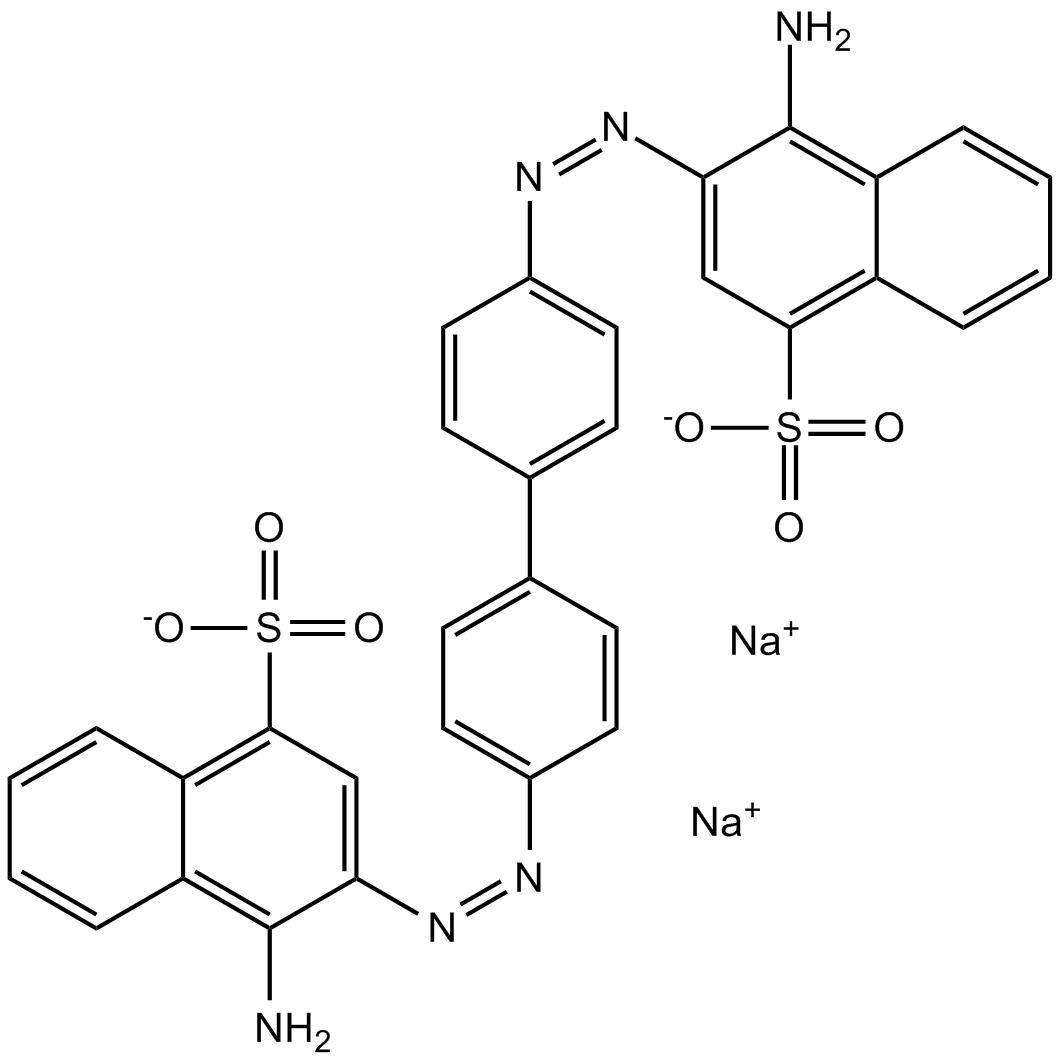Congo Red |
| カタログ番号GC13270 |
コンゴレッドはアゾ染料です。
Products are for research use only. Not for human use. We do not sell to patients.

Cas No.: 573-58-0
Sample solution is provided at 25 µL, 10mM.
Congo Red is an azo dye. Congo Red (CR) binding been used as a diagnostic test for the presence of amyloid in tissue sections.
Congo Red histochemical stain may serve as a simple screening tool for investigating if the aggregates in mutant cells have misfolded β-pleated sheet secondary structures. Congo Red histochemical dye has the ability to bind specifically to crossed β-pleated sheet structures. Wild-type HSPB1 should maintain protein homeostasis by binding proteins in non-native conformations, thereby preventing substrate aggregation. The T139M mutant, however, fails in this function and results in an accumulation of misfolded proteins, which are targeted by Congo Red for intercalating between the β-pleated sheet structures. Congo Red histochemical stain may serve as a simple tool to investigate if the aggregates in mutant cells have misfolded β-pleated sheet secondary structures[1].
References:
[1]. Amornvit J, et al. A novel p.T139M mutation in HSPB1 highlighting the phenotypic spectrum in a family. Brain Behav. 2017 Jul 21;7(8):e00774.
Average Rating: 5 (Based on Reviews and 7 reference(s) in Google Scholar.)
GLPBIO products are for RESEARCH USE ONLY. Please make sure your review or question is research based.
Required fields are marked with *




















